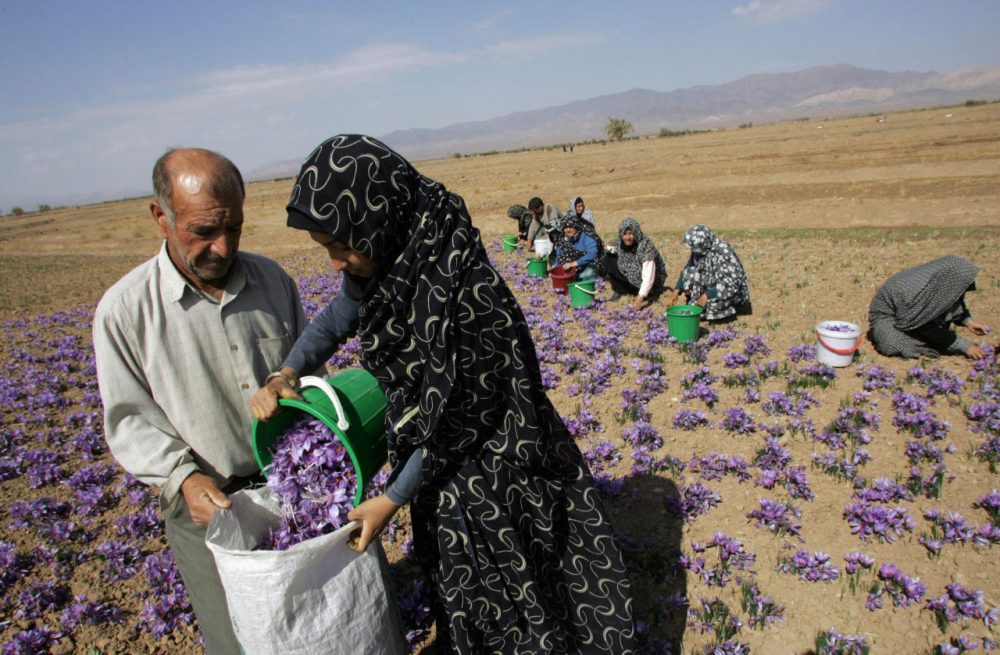For many women in Khorasan Razavi Province, the onset of fall only means one thing: saffron harvest time.
With over 9,700 hectares under saffron cultivation, some 80% of Iran’s saffron are grown in this northeastern province. The picking of saffron flower lasts for six weeks.
This lack of technology becomes evident during the harvesting and processing of saffron, the Persian monthly Zanan-e Emrooz reported.
Saffron is one of the most expensive food products in the world thanks to the labor intensive process of obtaining the spicy stigmas. There are only three of those in the center of each purple, cup-shaped bloom and it takes hundreds of flowers to produce a commercially useful amount.
It takes 2,100 kilograms of flowers per hectare to create 3.5 kilograms of saffron. To produce this amount, 900 workers are needed.
Saffron growers most often employ women from among their neighbors and relatives to pick the flowers and pluck their stigmas. With this cheap labor, the agricultural sub-sector did not feel the need to rethink the structure of their business over the past decades.
The job women carry out in this sector has resulted in a decline in the quality of this strategic agricultural product, says the founder of Negin Zafran-Pajouhan, Zahra Riyazi.
“If the current trend persists, our country might lose its place as the top saffron producer,” she added.
Up to 90% of methods adopted during saffron harvesting and processing are traditional. The processing stage is not difficult but it needs patience and a careful hand as well as mass participation for a short period of time.
“In fact, women managed to find a place in saffron production because of men’s need. But the point is women can shine in other related areas, namely saffron trade and exports if the notion of male dominance were to change,” Riyazi said.
It seems more economically viable to engage women in saffron production than to set up workshops complying with laws and standards for labor safety and hygiene.
That women work at least eight hours a day to reap saffron blooms and extract the few stigmas for a maximum of $5 is nothing less than “exploitation”, says Layli Abolhassani, PhD holder of agricultural economics. “Men do not take on the same type of low-pay work.”
Riyazi noted that only three women are active in the top level of saffron production hierarchy.
“Saffron trade is a male-dominated field. The sprawling industry defines roles for women up to the processing stage and not beyond,” she said.


